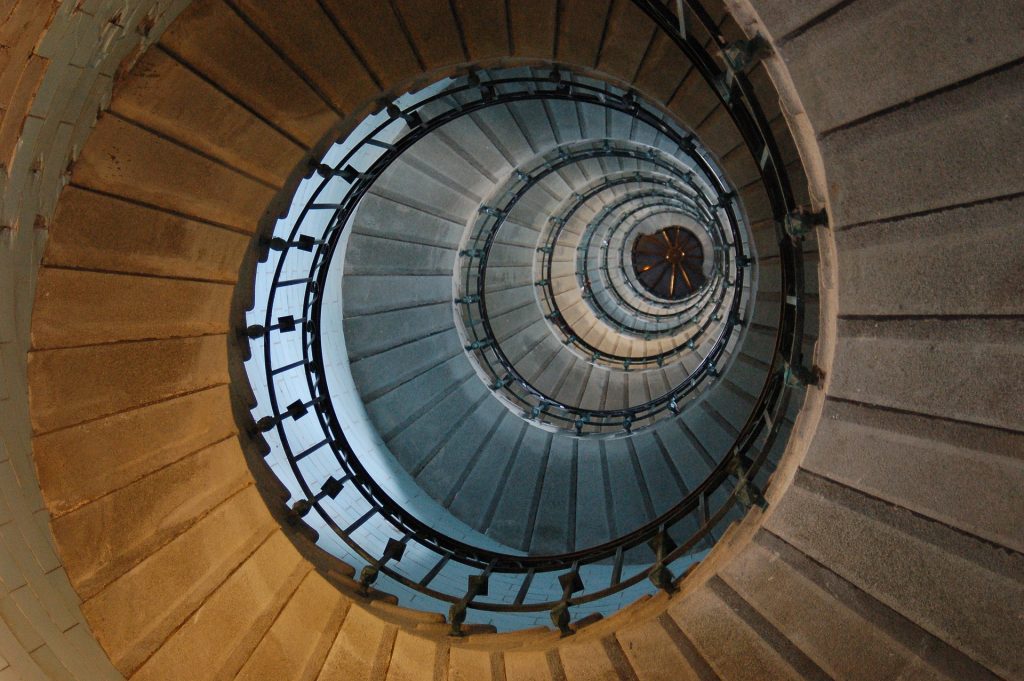The week before Christmas, I woke up with vertigo. This wasn’t just a little dizziness; I felt like the bed was trying to throw me, the room was spinning, and I was sick to my stomach. I wasn’t going anywhere and called the urgent care line at my local clinic. They told me it was likely something called Benign Positional Vertigo (or BPV, also known as Benign Paroxysmal Positional Vertigo, BPPV), and there wasn’t much they could do. They said there were some rolling maneuvers I could do, but moving my head made me much worse. So I lay in bed, propped up and hoping this would go away soon.
 BPPV is a condition that’s well-explained by its name. It’s benign, meaning that no matter how sick I felt, I would not die from this, although there is a risk of falling from lack of balance. Its symptoms are related to the position or movement of my head, hence it’s positional. Paroxysmal means that the spins I was having would come and go. And vertigo, is the sensation of the room spinning around you. The vertigo is much worse and different from being dizzy or lightheaded, in which you feel like you’re moving, not the room.
BPPV is a condition that’s well-explained by its name. It’s benign, meaning that no matter how sick I felt, I would not die from this, although there is a risk of falling from lack of balance. Its symptoms are related to the position or movement of my head, hence it’s positional. Paroxysmal means that the spins I was having would come and go. And vertigo, is the sensation of the room spinning around you. The vertigo is much worse and different from being dizzy or lightheaded, in which you feel like you’re moving, not the room.
BPPV is essentially a condition that can happen to anyone, but does so more frequently in older adults. Your risk for this condition is increased if you’ve had a head trauma, are prone to migraines, have osteoporosis, diabetes, or inner ear problems. BPPV is caused by tiny calcium crystals, which break loose and float in the fluid-filled canals of your inner ear (your vestibular system), creating vertigo and wreaking all kinds of havoc with your balance.
BPPV is often diagnosed by the fact that your vertigo is stimulated by head movements, the intermittent nature of the symptoms, and by eye movements that occur during periods of vertigo. Called nystagmus, these eye movements are responsible in part for the vertigo, but are also diagnostic. Experts in treating BPPV can tell where the crystals are located from the direction and nature of your eye movements.
Standard treatments for BPPV include determining the side and location of the crystals, and then performing a series of head positions which help to move the crystals out of the canal. The most common of these treatments is called the Epley Maneuver, however different protocols may be used, depending on the specific canal affected and the position of the crystal. In very severe cases, your doctor may prescribe medications for nausea or to calm down your vestibular system, however these medications are only to deal with the symptoms of BPPV, and don’t resolve the condition.
In Chinese medicine, dizziness, vertigo, and lightheadedness are all considered to be something called internal wind. The nature of wind is that it comes and goes, tends to affect your upper body, and may move from place to place. Essentially, internal wind is movement within your body where there shouldn’t be any, as in the case of vertigo. Other symptoms that may be caused by internal wind include tics, tremors, numbness, and twitching. Wind is often the result of becoming run down or depleted, but it can also be caused by an overabundance of phlegm.
If you were to see your acupuncturist for dizziness or vertigo, they would first diagnose the underlying cause of the wind before they could treat it appropriately. In general, acupuncture cannot reposition the wayward crystals that cause BPPV. However, acupuncture and Chinese herbal medicine can help with the residual dizziness that occurs after a repositioning maneuver has been successful. In many cases, even though the crystals have moved, you are left feeling dizzy (not vertigo, however), have visual sensitivity, and balance issues until your irritated vestibular system calms down.
Ultimately, I ended up at a dizziness and balance clinic because the repositioning maneuvers weren’t working. After three appointments, the therapist told me I had a “stubborn case”, but finally the crystals moved and my vertigo subsided. I was left feeling lightheaded and a little off balance for several days, but with a little acupuncture and an herbal formula to treat internal wind, I’m feeling like new. The bottom line is that a combination of repositioning techniques and Chinese medicine can be an effective way to treat BPPV, especially the residual dizziness and balance issues that occur until your vestibular system calms down.



